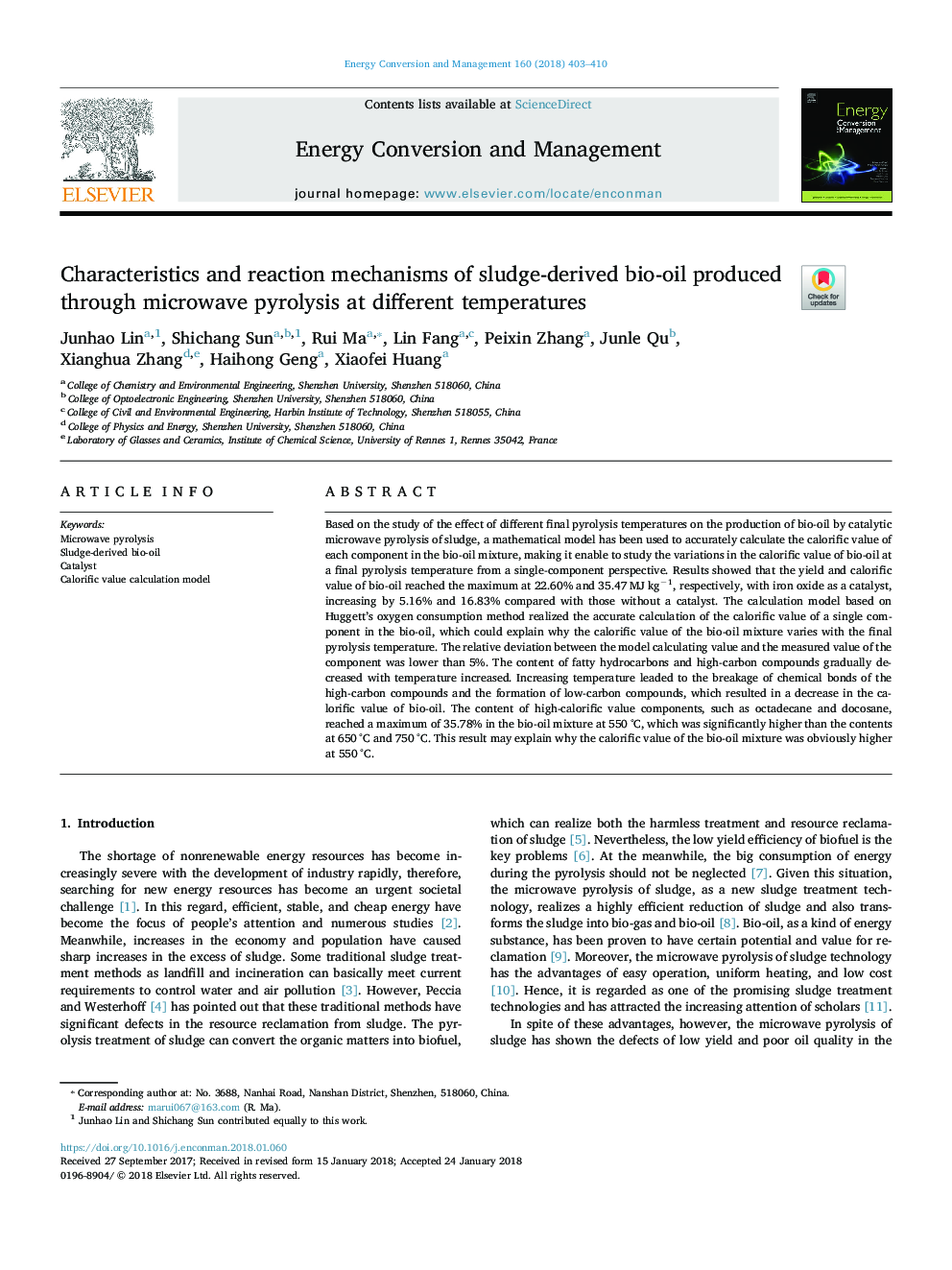| کد مقاله | کد نشریه | سال انتشار | مقاله انگلیسی | نسخه تمام متن |
|---|---|---|---|---|
| 7158973 | 1462802 | 2018 | 8 صفحه PDF | دانلود رایگان |
عنوان انگلیسی مقاله ISI
Characteristics and reaction mechanisms of sludge-derived bio-oil produced through microwave pyrolysis at different temperatures
ترجمه فارسی عنوان
ویژگی ها و واکنش های مکانیکی روغن زیستی حاصل از لجن تولید شده از طریق پیرولیز مایکروویو در دماهای مختلف
دانلود مقاله + سفارش ترجمه
دانلود مقاله ISI انگلیسی
رایگان برای ایرانیان
کلمات کلیدی
پیرولیز مایکروویو، بیولوژیکی مشتق شده از لجن، کاتالیزور، مدل محاسبه گرمادهی،
موضوعات مرتبط
مهندسی و علوم پایه
مهندسی انرژی
انرژی (عمومی)
چکیده انگلیسی
Based on the study of the effect of different final pyrolysis temperatures on the production of bio-oil by catalytic microwave pyrolysis of sludge, a mathematical model has been used to accurately calculate the calorific value of each component in the bio-oil mixture, making it enable to study the variations in the calorific value of bio-oil at a final pyrolysis temperature from a single-component perspective. Results showed that the yield and calorific value of bio-oil reached the maximum at 22.60% and 35.47â¯MJâ¯kgâ1, respectively, with iron oxide as a catalyst, increasing by 5.16% and 16.83% compared with those without a catalyst. The calculation model based on Huggett's oxygen consumption method realized the accurate calculation of the calorific value of a single component in the bio-oil, which could explain why the calorific value of the bio-oil mixture varies with the final pyrolysis temperature. The relative deviation between the model calculating value and the measured value of the component was lower than 5%. The content of fatty hydrocarbons and high-carbon compounds gradually decreased with temperature increased. Increasing temperature leaded to the breakage of chemical bonds of the high-carbon compounds and the formation of low-carbon compounds, which resulted in a decrease in the calorific value of bio-oil. The content of high-calorific value components, such as octadecane and docosane, reached a maximum of 35.78% in the bio-oil mixture at 550â¯Â°C, which was significantly higher than the contents at 650â¯Â°C and 750â¯Â°C. This result may explain why the calorific value of the bio-oil mixture was obviously higher at 550â¯Â°C.
ناشر
Database: Elsevier - ScienceDirect (ساینس دایرکت)
Journal: Energy Conversion and Management - Volume 160, 15 March 2018, Pages 403-410
Journal: Energy Conversion and Management - Volume 160, 15 March 2018, Pages 403-410
نویسندگان
Junhao Lin, Shichang Sun, Rui Ma, Lin Fang, Peixin Zhang, Junle Qu, Xianghua Zhang, Haihong Geng, Xiaofei Huang,
